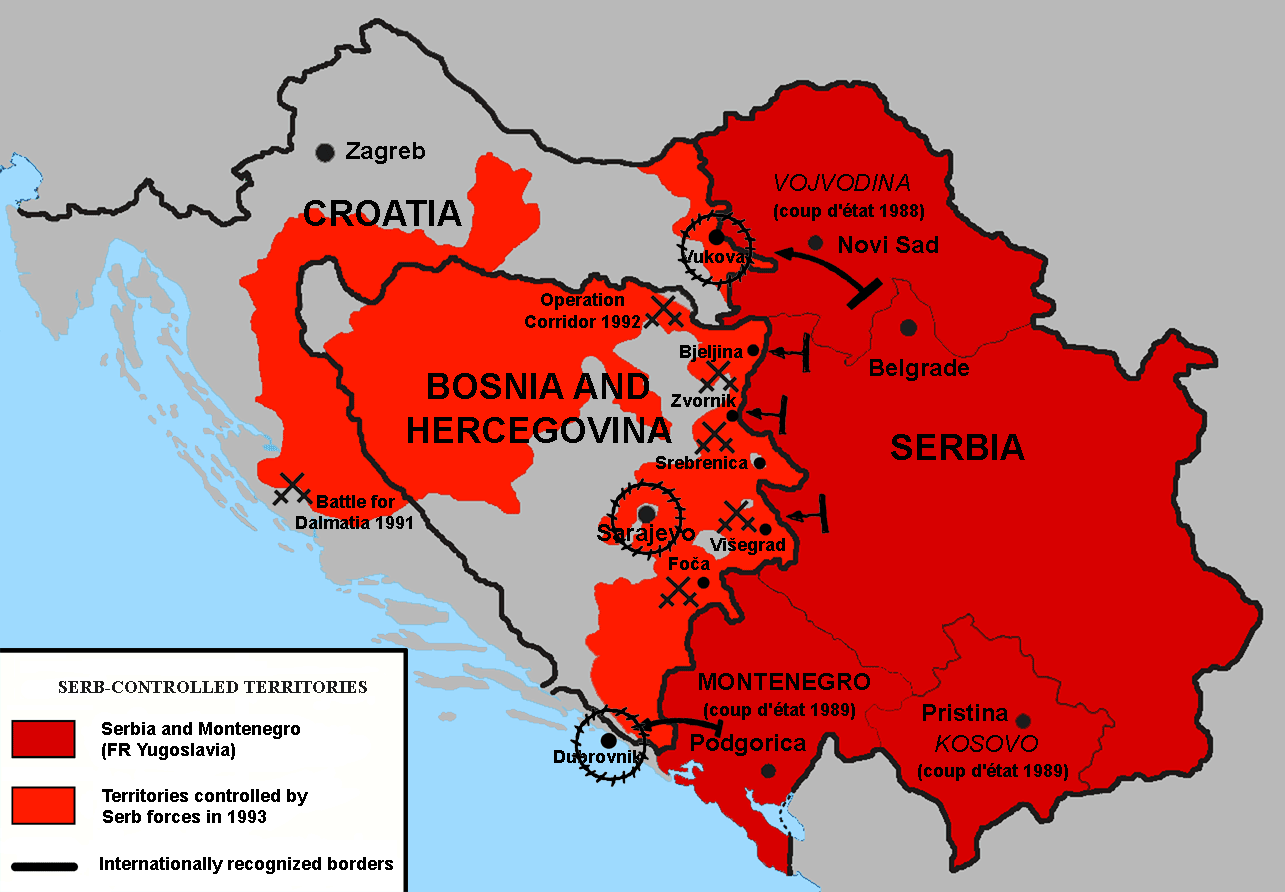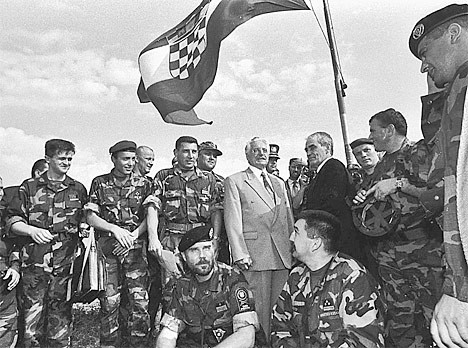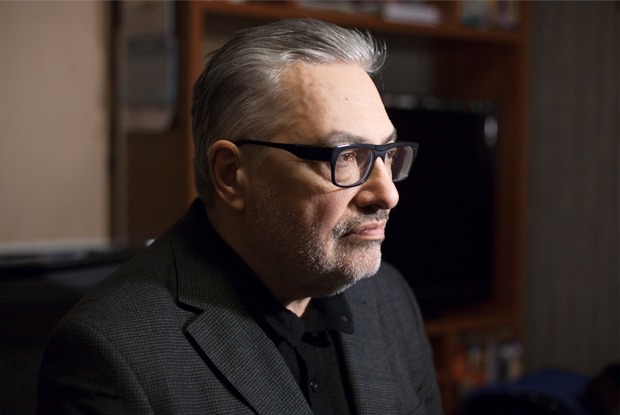What do people mean by “the Croatian Scenario”? What time does it refer to?

The "Croatian Scenario” refers to the Balkans in the mid 1990s. At that time, the Croatian War of Independence was taking place. The country had declared independence from the Socialist Federal Republic of Yugoslavia, and was fighting the Serb-controlled Yugoslav People's Army as well as local Serb forces.
In 1991, the self-proclaimed Republic of Krajina Serbska was created in the eastern-central part of Croatia (light red on the map). It was formed by the ethnic Serbs with the help of then Yugoslav People's Army and paramilitary groups from Serbia.
After a devastating beginning of 1992, the war entered a calm phase. The UN had an international peace-keeping force on the ground between the two fighting sides. However, the majority of the Croatian population in the self-proclaimed republic had to leave or was killed.
“Operation Storm”
Croatia managed to re-take its territories from the so-called Krajina Serbska as the direct result of a large scale military operation called “Storm”. It was carried out in August 1995 and lasted 84 hours. When it was over, the rule of the constitutional government of Croatia was restored on the previously occupied territories, except for Eastern Slavonia, Baranja, and Western Syrmia (light blue on the map below). 200,000 soldiers took part in the operation. 18,4% of the total area of Croatia was returned to Croat government control.

Eastern Slavonia, Baranja, and Western Syrmia were one Oblast (government administrative region) of Krajina Serbska. After the fall of the Krajina, it was a short-lived Serb parallel entity. A United Nations Transitional Administration for Eastern Slavonia, Baranja, and Western Sirmium (UNATES) was established there in January 1996. It was a temporary measure to assist with the further reintegration of the region to Croatia. In 1998, the mission came to an end and the territory officially returned to Croatia.
A first Croatian government military operation “Flash” took place in May 1995, before operation “Storm”. As a direct result, Western Slavonia was retaken by the Croat government.
Who speaks about the "Croatian Scenario" in Ukraine
In June 2017, after the Secretary of the National Security and Defense Council Oleksandr Turchynov stated the need to finish the Anti-Terrorist Operation in eastern Ukraine and move to “a new form of defense against the hybrid war”, the phrase “Croatian Scenario” first started to appear in the Ukrainian media space.
Iryna Herashchenko, First Deputy Speaker of the Parliament and a representative of Ukraine in the Contact Group on settling the conflict in Donbas, assured us that the group foresees a non-military, peaceful end to the war.
Dmytro Tymchuk, an MP and military expert, listed reasons for why Ukrainian authorities should implement this scenario:
“It would mean the full and unconditional withdrawal of Russian soldiers and mercenaries from Donbas, an end to the supply of the two army corps which are fighting in Donbas against the Ukrainian Army, and the real suspension of activities of Russian terrorists troops as a united structure - it would turn them into disjointed groups of local marauders.”
Other Ukrainian authorities also consider the use of this scenario.
After visiting Croatia, Ukrainian Prime Minister Volodymyr Groysman stated that that country's experience on its way to entering NATO and the EU can provide useful lessons for Ukraine.
Heorhiy Tuka, the Deputy Minister on the Temporary Occupied Territories and IDPs, stated that Ukraine is interested in learning about the Croatian experience in the period after the war:
"Croatia has a wealth of experience in post-conflict settlement and resolution, and we are also interested in methods and techniques of conducting negotiations, as well as in the areas of dealing with prisoners of war and missing persons."
The attitude towards the scenario among pro-Russian figures
Dmytro Tymchuk, in a statement in June, explained that the Ministry of Foreign Affairs of the Russian Federation criticized the idea of using the "Croatian Scenario
for Ukraine because it would mean an actual full withdrawal of Russian soldiers and mercenaries from Donbas. A few months later, while Russia might still be dissatisfied with these conditions, its rhetoric might change. And even the phrase “Croatian Scenario” might appear in it.
The media source Delovaia Stolitsa draws parallels between the recent behavior of Russian president Putin and statements of Russian loyalists in Ukraine.
In mid November, Vladimir Putin stated that he supports the suggestion of Viktor Medvedchuk about prisoner exchanges between Ukraine and the representatives of the so-called “LNR” and “DNR”. Medvedchuk is a gray cardinal of Ukrainian politics, the godfather of his child is Vladimir Putin, and he also is a member of the trilateral contact group on the implementation of the Minsk agreements.
Putin's statement was released following the release of photos of Putin and Medvedchuk praying in the Novy-Yerusalim monastery near Moscow.
Medvedchuk appealed to Putin, asking him “to use his authority to demonstrate humanitarianism”, and to call on the heads of the so-called republics to agree to the exchange.
Before this, Putin did not publicly acknowledge he has direct personal contact with the leaders of the so-called republics. But after this request by Medvedchuk, he acted quickly and that same day had a phone conversation with the head of “DNR” Aleksandr Zakharchenko and then-leader of “LNR” Igor Plotnitskiy.
Meanwhile, on Ukrainian TV, Vadym Novynskyi, Ukrainian oligarch and an MP from the Opposition Bloc who is known for his pro-Russian stance (he used to have Russian citizenship and is currently a member of the party which succeeded runaway president Yanukovych’s “Party of Regions”) suggested the use of the "Croatian Scenario" in Donbas. However, he did not mention operation “Storm”, but meant only the de-occupation and re-integration of Eastern Slavonia which followed it. This de-occupation, according to Novinskiy, was made possible solely by peaceful negotiations. According to him, therefore, the "Croatian scenario" is an example of why Ukrainian authorities need to conduct negotiations with the leaders of the unrecognized republics.
Novynskyi is not the first pro-Russian politician to speak about an exclusively peaceful resolution to the conflict in Donbas. With such statements, these pro-Russian politicians only act to divide society, blaming Ukrainian authorities for sending soldiers to Donbas and escalating the conflict there. In fact, however, their motives are simple - to restore their business with Russia, and to feed the Ukrainian electorate populists promises to bring peace.
However, neither they nor Novynskyi mention that before the negotiations took place in Croatia, a very successful military operation was carried out there by the Croatian army - an operation which left no chance of success for the separatists.
Considering Novinskyi a voice for Putin's messages in Ukraine, combined with the incident of Medvedchuk and Putin getting involved with the terrorist groups, it seems that the Russian president has started to make an attempt (in word only) to bring the situation in Donbas to a peaceful conclusion. We can expect that these peaceful initiatives will emanate more often from Russia in the near future. One reason for this might be the presidential elections in Russia next year: even though Putin's victory is predetermined, he still needs to provide the electorate there with a mission that he “won” on the international stage. In this case, he can appear in the role of a great peacemaker. This role is also crucial to him with respect to the FIFA 2018 World Cup, which Russia is hosting – to show to the world how great and noble Russia is.
This is exactly the same game he played before Russia hosted the Winter Olympic Games in Sochi in 2014, prior to which Putin pardoned Mykhail Khodorkovskiy and gave amnesty to the Russian punk band “Pussy Riot” - all to help him cultivate the image of a good guy.
Critisism of the scenario in Ukraine
Hanna Shelest, an expert in international affairs and the editor of UA: Ukraine Analityka, is sure that the "Croatian scenario" would be very difficult to implement in Ukraine. She listed its key aspects for Hromadske.ua:
- According to various sources, roughly 200,000 Serb refugees were evicted from their homes. Most of them were accepted by Serbia;
- The operation was successful only on paper - for three years the Croatian army was building up its power and then in six days re-took the territory;
- “A key question is how they returned it, and which crimes, which led to international consequences, they committed,” asked the expert. At least three Croatian generals were brought before the International Tribunal after implementing the "Croatian scenario".
- After the operation, new peace talks and a new peace agreements started, and the UN became directly involved - not only as peacekeepers, but also as the Temporary Administration in Eastern Slavonia.
- The international community backed Croatia once it gained independence. But at the time of operation “Storm”, hostilities were taking place all across Balkans, and the international community worked to bring peace to at least 5 hot spots.
- The European Community put all its efforts to help Croatia, because it perceived this country as the "border" of peaceful Europe, from where the Balkan conflict could go further. A large number of refugees from the Balkans was already in other countries. However, the operation “Storm” itself was condemned by the EU.
- Russia was involved in various parts and steps of the process, as a permanent member of the UN Security Council and an ally of Belgrade. It tried to become an intermediary, and made efforts to work with the rest of the international community to resolve the situation, but Russia’s role was not accepted by the Croatian side. In Ukraine, Russia is a party to the conflict, not just an interested party.
- The United States knew that there would be such an operation. Several United Nations peacekeepers suffered and died during this operation.
The National Institute for Strategic Studies (NISS) in its research analyzed pluses and minuses of a possible “Croatian scenario” for Ukraine:
The minuses:
- Significant human losses;
- Financial expenditures for the military, the civilian population, and rebuilding of the infrastructure after such an operation would increase;
- The attitude towards Ukrainian authorities among the population of the region would worsen;
- Relations with Russia, and possibly with the European Union, which prefers a political and diplomatic resolution to the conflict, would deteriorate.
When discussing international conflict resolution scenarios, NISS experts consider the so-called “German Scenario” as the most acceptable one for Ukraine. The scenario is about reunification, the one between East and West Germany in 1990. In Ukraine, the NISS foresees the voluntary reintegration of uncontrolled territories of Donbas.
What can be learned from the "Croatian scenario"
Among the pluses of the "Croatian Scenario", the experts of the NISS include:
- Restoration of the territorial integrity of Ukraine and victory in war;
- Better chances of bringing to justice the perpetrators of treason, enemy cooperators, and terrorists;
- The chance to bring the local power structure in line with Ukrainian law.
Various Croatian officials have also spoken out about the possible positive outcome of the implementation of the “Croatian Scenario” in Ukraine.
Vesna Shkare-Ozhbolt was the leader of the Administration of the President of Croatia in the 1990s, and took part in all of the negotiations which led to the eventual return of territories to Croatia and their later peaceful re-integration. In an interview to Yevropeiska Pravda, she spoke about the relevance of the "Croatian scenario" in Ukraine. In it, she also stressed that all of the positive aspects used by Croatia for the establishment of peaceful life in the returned territories can be used by Ukraine as well. Among them is:
- Return of people to their homes;
- Payment of government pensions;
- Recognition of documents signed on the uncontrolled territories;
- Clearing of landmines;
- Creation of transitional police forces.
When asked whether the demilitarization of separatist forces would have been possible without “Operation Storm”, Shkare-Ozhbolt replied tha negotiations had started long before the military operation, and never stopped - despite constant violation of various Peace Agreements. The Croatian side asked for international support,and the UN created the mission UNATES:
"I'll tell you a secret. We started negotiations for the creation of UNATES before operation Storm. As a result of the operation, we saw a plan.The first step in the implementation of the plan was demilitarization. Without that, the international mission would not have succeeded."
Shkare-Oz also pointed out that one contact among the very many levels of negotiations was Serbian President Slobodan Milošević:
"Formally, he never interfered in our conflict. But we knew that, in fact, he was in total control of the heads of Knin [the capital of Krajina Serbska - Ed]."
Shkare-Ozhbolt said it was very difficult to negotiate with individual local heads of separatists, and it made sense to talk to the person who controlled them - Slobodan Milošević. Therefore, there were roughly 13 rounds of negotiations with him.
The interview also touched on other sensitive questions. One of these is a remission for the separatists:
"As a lawyer, I want to stress: we are talking not about amnesty, but about a remission. An amnesty is granted to a particular entity, and only after a conviction. On the other hand, remission is applicable to everybody, and doesn't require a court hearing. We had a total remission. It was granted to anyone who carried a gun but hadn’t killed anyone."
Another sensitive topic was the creation of a transitional police force, which included ex-separatists:
"Only those who wanted to became policemen. And only those who agreed to pledge allegiance to Croatia. Of course, at first there was dissatisfaction with this policy in Croatia. People did not like it. But when they saw the effectiveness of the transitional police, there was less and less anger. We tried to create as much contact between people as possible. First of all, we tried to re-unite families. For example when a father was on one side of the conflict, and mother and children on the other".
The diplomat says that put into a similar scenario again, she would deal with it the same way:
"Because I remember Vukovar (in 1991) where thousands were killed, their bodies were thrown to pits. But peaceful reintegration is the only way to save people's lives. Moreover, it was the only way to avoid direct military conflict between Croatia and Serbia. When we carried out operation Storm, we dealt with the territories in the south of the country, territories which were not bordering Serbia. However, there was such border in the east. That would have been a large scale war with much greater losses".
The diplomat added that despite disapproving of it, the international community did not act against the military operation.
"We accepted all the plans suggested by international intermediaries, but they [Krajina Serbska - ed] rejected them. They refused our economic and humanitarian aid, and that led to self destruction, with inner conflicts starting throughout the 'republic'. Croatia had to step in and put and end to this anarchy - the world realized that. I want to emphasize again that the international community was present in everything we were doing."





